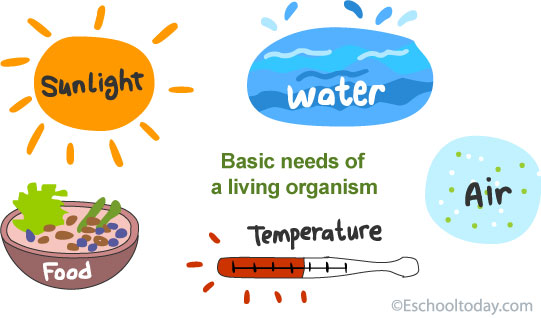What you should know about these terms, how they impact us and how we can use them to achieve sustainability and fundamental systems change.

The Basis of Biopower
When asked about what is necessary to live, most people list things like food, water, and shelter. These things are related to our bodies and the environment, and it often feels like we lack control over them due to overwhelming pressure from society. Can we change how society thinks about the environment? By doing so, can we take back power over our body and environment?

What are Biopower and Biopolitics?
The terms biopower and biopolitics are relatively unknown, and probably like many of you, I never heard of them until last year when I took a class on gender studies. Understanding these terms is incredibly helpful when recognizing how governments and other societal structures hold power over us and our bodies, which is crucial for understanding key issues such as women’s rights and sustainability.
Biopower is the regulation of bodies, and therefore of people’s lives, to control populations. This term was created in the 1970s by French scholar Michel Foucault to describe how modern nations regulate bodies through various technologies. By gathering biopower, institutions control entire populations, and this power became essential for the formation of modern nation states and capitalism.
Foucault noticed a trend in the rise of technology and created the term to address how modern institutions, through this control, slowly take away the rights of the people. By doing so, they are not limited by the people and are able to carry out appalling actions that promote unjust behaviors like racism and sexism.
Biopolitics refers to how nation states seek to control the bodies of others through life factors, like the ones mentioned at the beginning of this article. Life factors can influence death rates, fertility rates, productivity, etc. Each life factor is connected to the physical body, such as its ability to move or to work. Despite us being responsible for our own bodies, we often wrestle with societal institutions for this biopower. Therefore, biopower is a powerful tool that institutions seek in order to control both individual bodies and the bodies of entire populations, and this adds to the institution’s overall authority.
How is Biopower Controlled?
Biopolitics is carried out through the use of disciplinary power. To use disciplinary power, an institution separates a targeted population into smaller groups. They can informally or formally train individuals within these groups to become leaders that discipline and indoctrinate others into the system. To put it simply, disciplinary power builds on itself by disciplining others who in turn discipline others in a positive feedback loop. Institutions use disciplinary power to enforce desired behaviors related to the body.
For example, a government may regulate abortion laws in order to increase birth rates in their region. Policies can be enacted to regulate the behaviors of individuals and therefore the behaviors of a population. In the end, the original institution that developed the policy benefits.
However, biopolitics is not limited to organizations but also applies to societal structures. The attitudes of populations enforce biopower by creating a culture that promotes certain habits regarding one’s bodies or the bodies of others. But what does biopower have to do with the environment and living sustainability?

The Connection Between Biopower and the Environment
Biopolitics aims to control bodies of individuals and populations, but the body is heavily tied to the environment since it exists within a connected system of resources and other living beings. Therefore, biopower also affects the environment since the environment is the basis for many of the life factors that biopower can act upon, such as food access or air quality.
Environmental conditions can have a large influence on the strength of the institutions who hold biopower. For example, if members of a neighborhood have little access to fresh groceries, then they will be more easily influenced by organizations that provide health services, since the people may be more susceptible to illness. However, it goes beyond the impact of individual organizations to the structures in power who want to maintain current environmental standards.
Biopower works by distinguishing between what is ‘normal’ and what is ‘abnormal,’ since people are disciplined to avoid the abnormal. What is ‘normal’ is to buy more items, like clothes, than we need. What is ‘normal’ is to use single-use plastics when eating or drinking. What is ‘normal’ is to power our technology with fossil fuels. But what is ‘normal’ is destroying our planet. Society shapes our idea of the environment by calculating what resources we can take from the Earth and then discarding it as soon as we are done. Our current society profits by using excess resources to produce items that will later be thrown away, so they can sell more products later. How can we overcome institutional pressures of biopower to turn away from our ‘normal’ behaviors about the environment to ‘abnormal’ ones?
How to Take Biopower Back and Shift Attitudes Towards Sustainability
Biopower is used to control populations, and institutions exert this power by disciplining overall attitudes towards the environment. It may be hard for someone to choose the ‘abnormal’ versus the ‘normal’ due to societal pressures. However, rather than choosing to constantly clash with societal expectations, it may be easier to create a ‘new normal’ where you are part of a community with the same attitudes. There are various ways to do this:
- You can try finding an existing community, either in person or online, who follow similar habits to live sustainably. For example, you could find a foraging group who shares tips on how to find edible plants in your local area and on how to cook them, which decreases the need to buy produce grown across the planet.
- You can change the perspective of your current community by integrating sustainable habits. For example, you could install a communal composting bin in your neighborhood, so your neighbors can begin thinking more about their food and waste habits.
Each method requires varying levels of resources and energy, so you should choose what you are able to do. It is also okay if you cannot do either because what is most important is carving out a space for you to feel ‘normal’ rather than ‘abnormal.’ Within this ‘new normal,’ the community can discipline others to live sustainably since it is easier to work with disciplinary power rather than against it. This way, people can reimagine how to interact with the planet and understand their own existence better by taking some biopower back.
